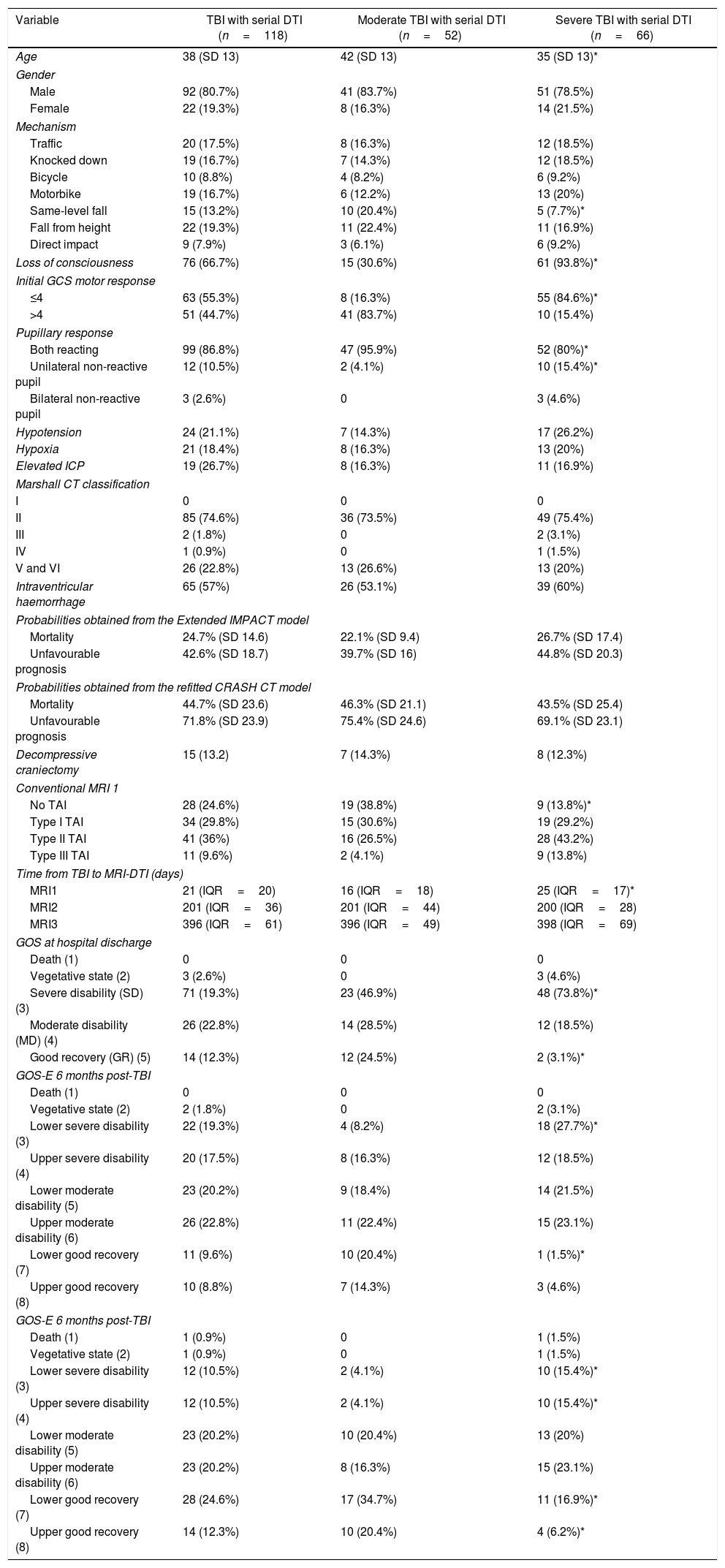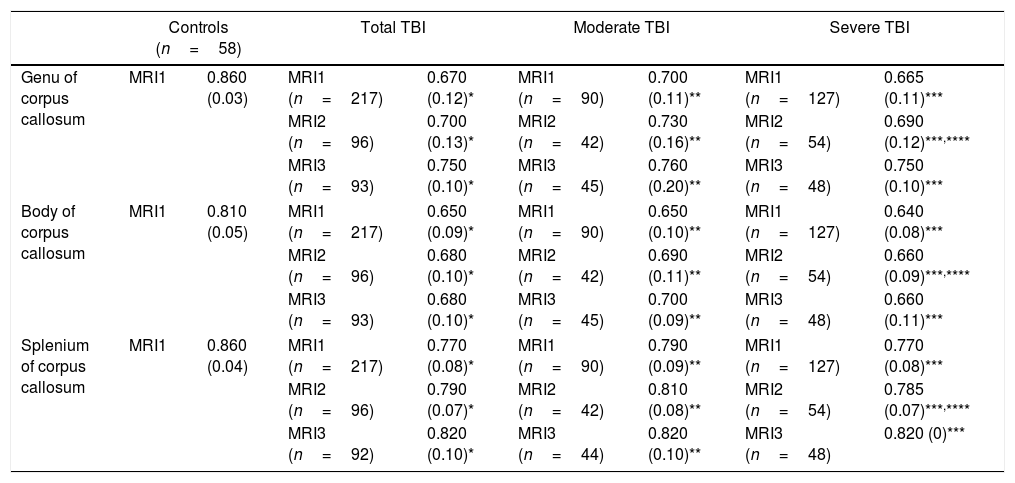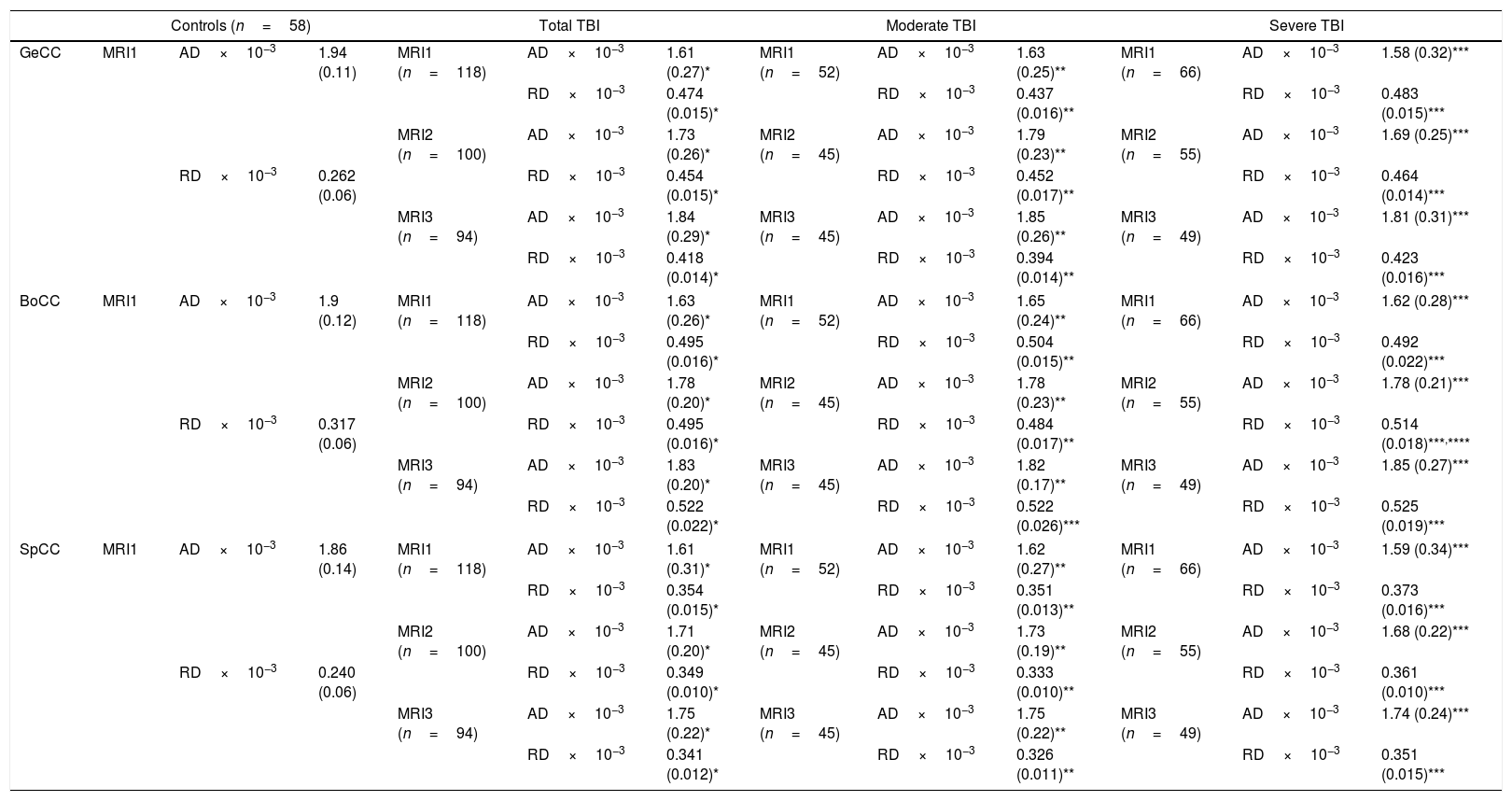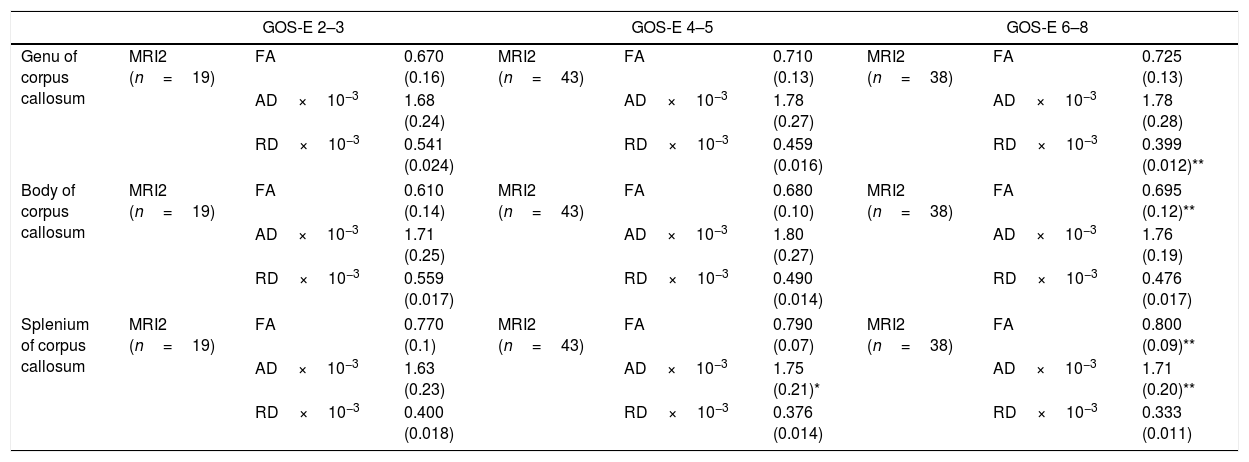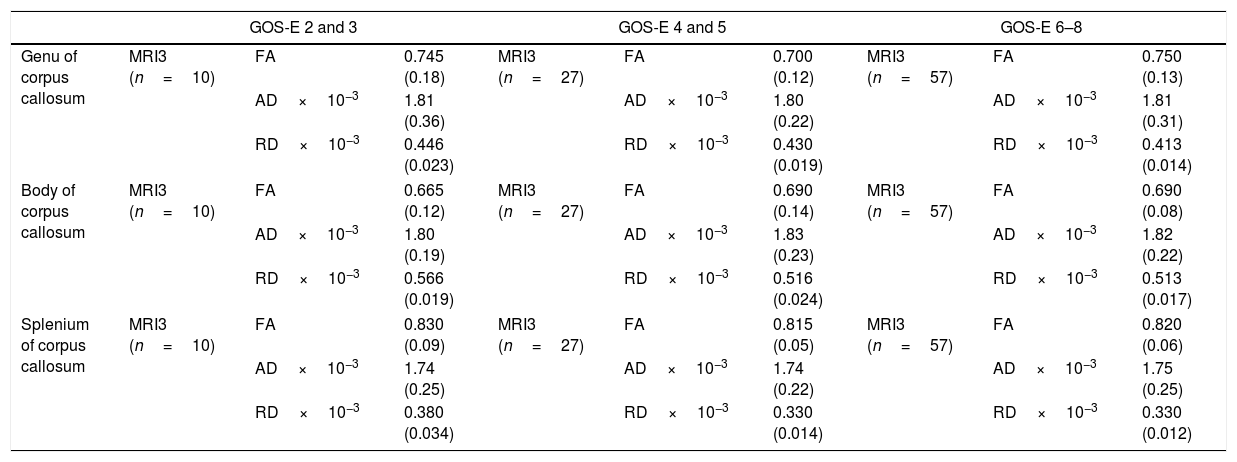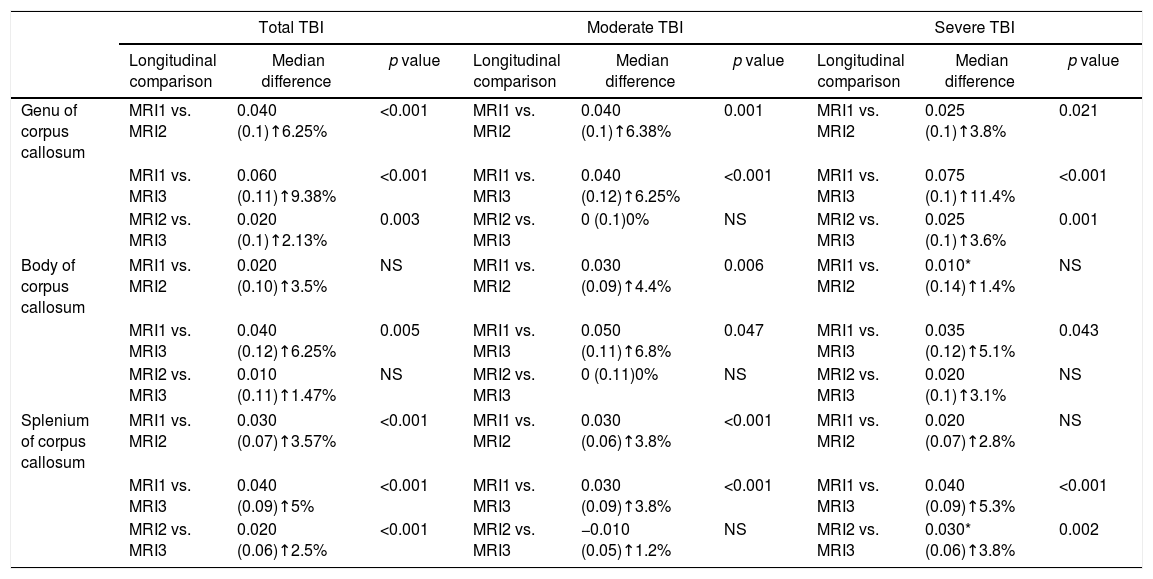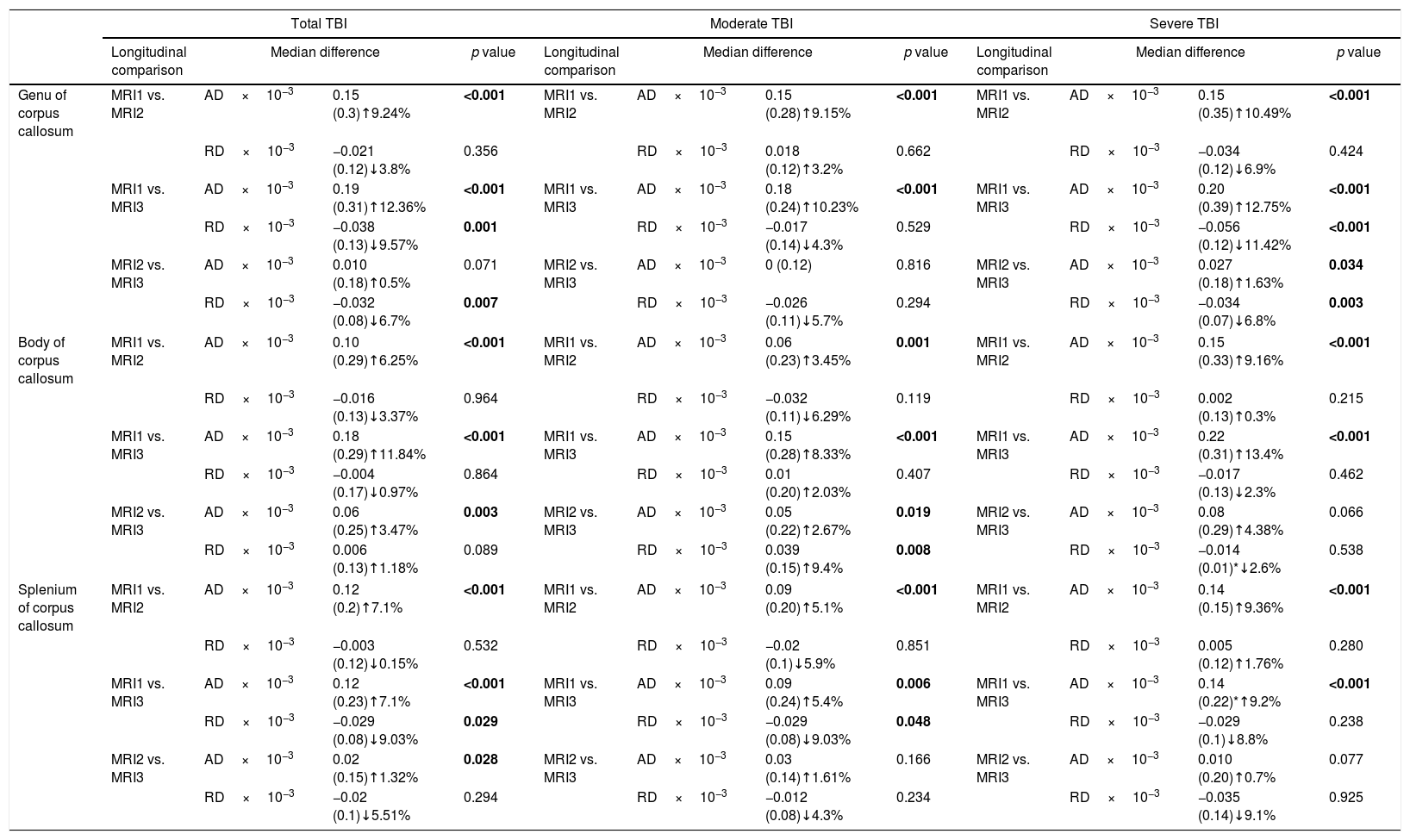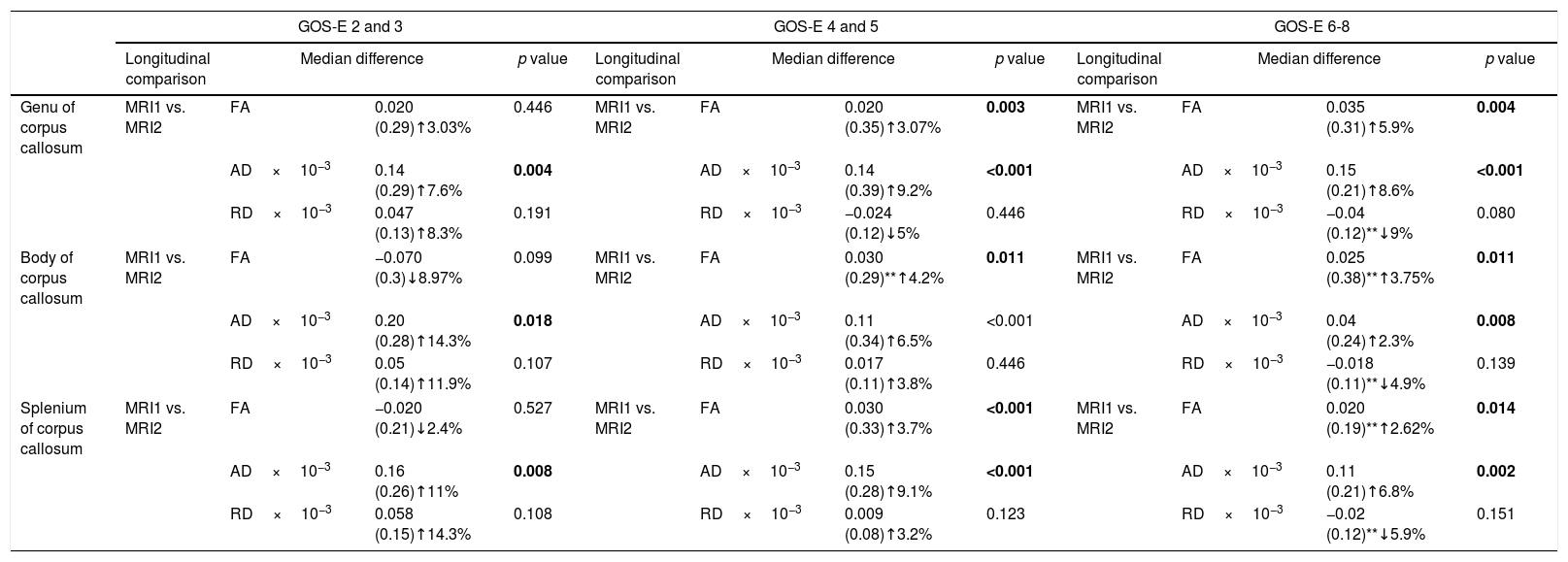Traumatic axonal injury is the main cause of the cognitive and neuropsychological situation of patients after head trauma (TBI). Additionally, there are some evidences about the dynamic evolution of traumatic axonal injury. Although the diffusion tensor MRI (DTI) sequence is considered a useful technique for modifying the extent of the traumatic axonal injury, few studies have evaluated the longitudinal changes in the characteristics of the DTI and its relation to evolution of patients.
Materials and methodsWe performed a prospective observational study in 118 patients with moderate to severe TBI. The study included clinical outcome assessment based on the Glasgow Outcome Scale Extended and serial DTI studies in the early subacute setting (<60 days) and 6 and 12 months after injury. Fractional anisotropy, axial and radial diffusivities were measured in the 3 portions of corpus callosum (genu, body, splenium) at each time point and compared to normalised values from an age-matched control group. Longitudinal fractional anisotropy analysis and its correlation with patient improvement was also done by non-parametric testing and ordinal regression analysis.
ResultsAlthough dynamic changes in DTI characteristics have been detected in the 3 portions of corpus callosum, patients continue to show lower fractional anisotropy and axial diffusivities values and higher radial diffusivities values compared to controls at the end of the period of study. We have also found differences in the pattern of DTI metrics change between subgroups of patients according with their favourable outcome.
ConclusionsThe temporal profile of the change in DTI characteristics seems to provide important information about the clinical recovery of patients after TBI.
La lesión axonal traumática es considerada la principal causa de las alteraciones cognitivas y neuropsicológica de los pacientes tras traumatismo craneoencefálico (TCE). Además, existen algunas evidencias sobre la evolución dinámica de la lesión axonal traumática. La secuencia de RM Tensor de difusión (DTI, diffusion tensor imaging) se considera una técnica útil para la caracterización de la lesión axonal traumática, pero son escasos los estudios que hayan evaluado los cambios longitudinales de las características del DTI y su relación con la evolución de los pacientes.
Materiales y métodosCiento dieciocho pacientes con TCE moderado y grave fueron estudiados mediante RM-DTI en la fase subaguda precoz (<60 días) y otros estudios sucesivos a los 6 y/o 12 meses tras TCE. Se ha medido la anisotropía fraccionada, difusión axial y radial en las 3 porciones del cuerpo calloso (rodilla, cuerpo y esplenio) y se han comparado con los valores de un grupo control. Además, se ha determinado la situación clínica de los pacientes mediante la Glasgow Outcome Scale Extended al alta hospitalaria, 6 y 12 meses tras TCE. Para el análisis longitudinal de las características del DTI y su correlación con la evolución de los pacientes se han empleado pruebas no paramétricas y un análisis de regresión ordinal.
ResultadosA pesar de haber detectado cambios dinámicos en las características del DTI en las 3 porciones del cuerpo calloso, los pacientes continuaron mostrando valores de anisotropía fraccionada y difusión axial significativamente inferiores y valores de difusión radial mayores en comparación con los controles al final del periodo de estudio. También hemos encontrado diferencias en el patrón de cambio del DTI entre subgrupos de pacientes que presentaron evolución favorable.
ConclusionesEl perfil temporal del cambio en las características del DTI parece proporcionar información importante sobre la recuperación clínica de los pacientes tras TCE.
Article

If it is the first time you have accessed you can obtain your credentials by contacting Elsevier Spain in suscripciones@elsevier.com or by calling our Customer Service at902 88 87 40 if you are calling from Spain or at +34 932 418 800 (from 9 to 18h., GMT + 1) if you are calling outside of Spain.
If you already have your login data, please click here .
If you have forgotten your password you can you can recover it by clicking here and selecting the option ¿I have forgotten my password¿.







